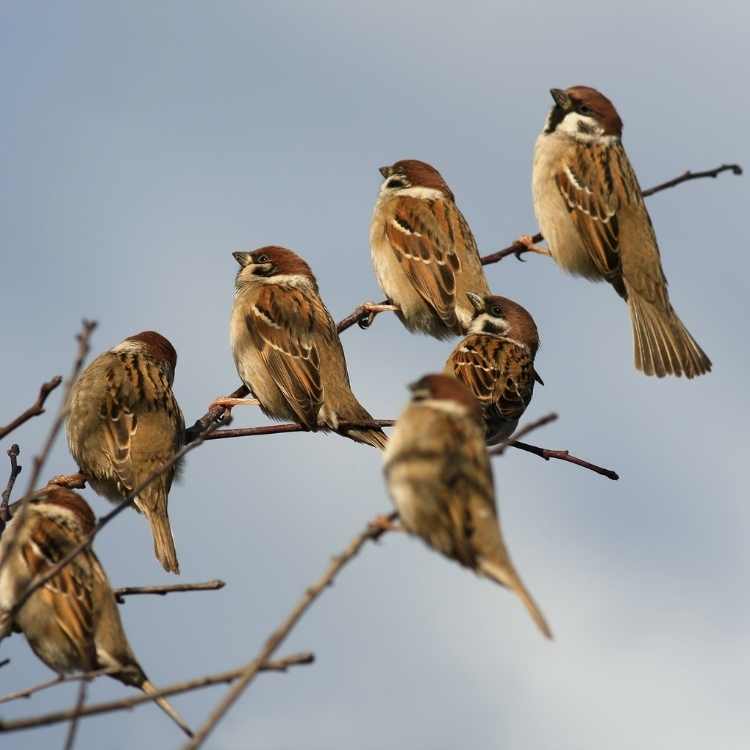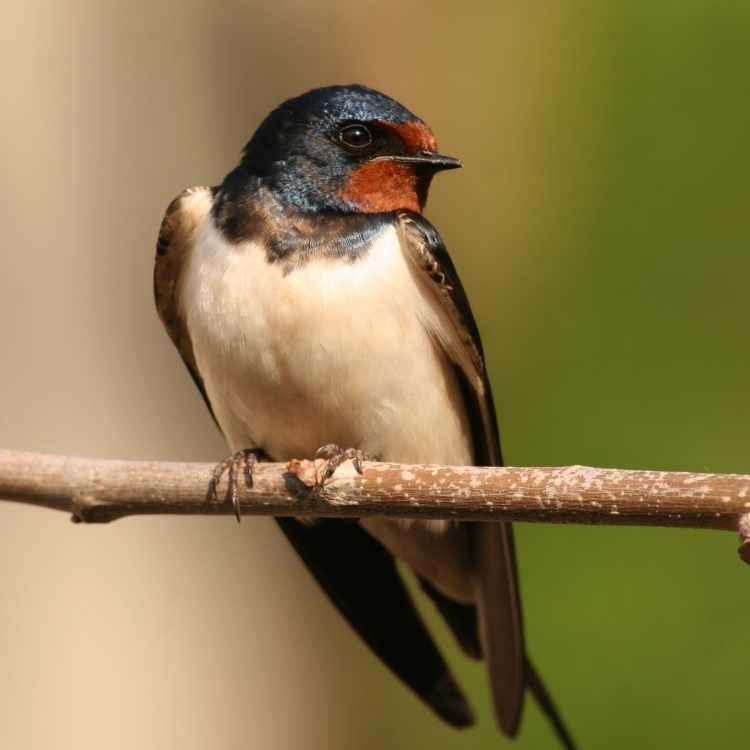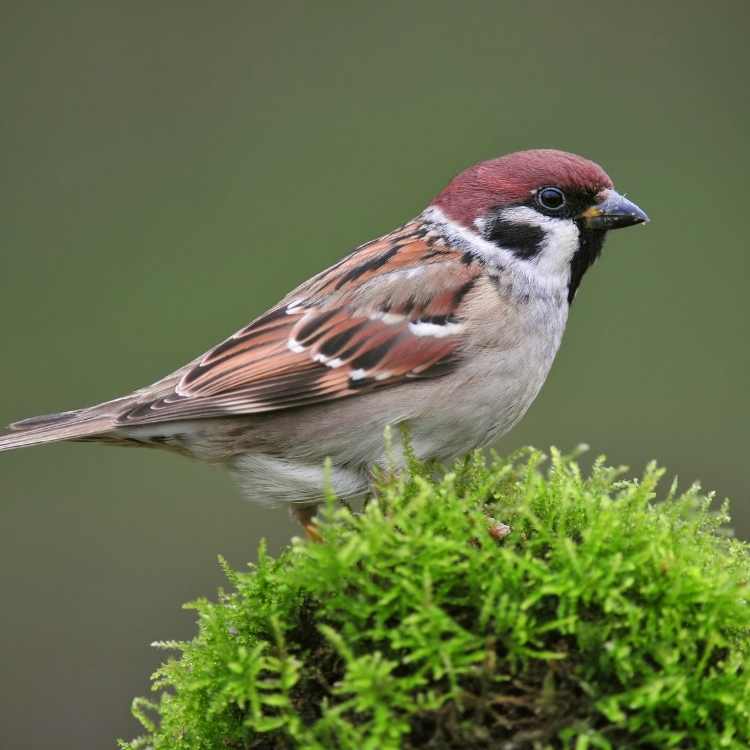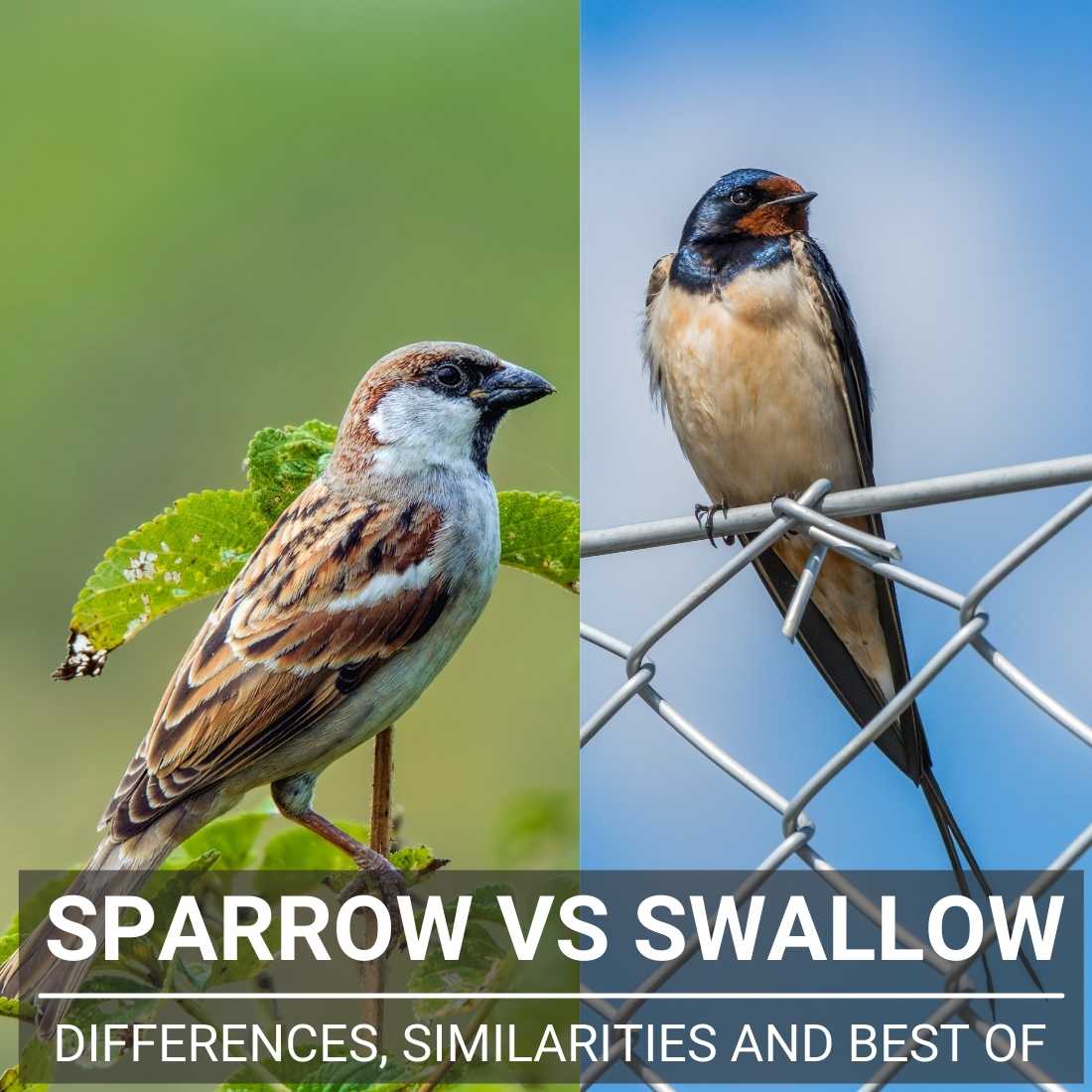Many bird species resemble each other so much that you can’t differentiate them at first sight. Sparrow and Swallow are prominent examples of these kinds of birds.
Usually, the Sparrow is a small bird with a square tail with no white color. On the other hand, the Swallow is a little larger than Sparrow and has a forked tail that usually has any white coloration.
But how can you completely differentiate these two bird species? Let us discuss that in detail.
Even though these birds have a lot of color in common, they have several unique characteristics that define them apart.
Both species can be found on every continent on the planet, with the exception of Antarctica. These distinctions between them may appear to be minor at first look, but they really lead to some quite fascinating distinctions underneath.
Here’s a short breakdown of all the differences between the Sparrows vs Swallows.

Table of Contents
Overview
| Sparrow | Swallow |
|---|---|
| Sparrows have a variety of calls. Mostly they produce chirp and twitter sounds, but their call is particularly dependent on their sub-specie. | Swallows usually produce a series of chirp, whine, and gurglecalls. |
| Square tail with no white color | Forked tail with white color |
| Smaller than the Swallow | Slightly larger than Sparrow |
| Less compact than Swallow | More compact than Sparrow |
| Sparrow’s face is light brown with a dark stripe through the eye | Swallow’s face is usually white |
| Prefer ground feeding | Prefer ariel feeding |
| Prefers an urban lifestyle | Prefers countryside |
| Normally fly at a lower altitude | Usually, fly at a higher altitude than sparrows |
| Sparrows have a brown-greyish beak | Swallows have orange-brown or olive-yellowish beak |
| The average life is 3-5 years (wild) | The average life is 10-12 years (wild) |
| Small colonies (20-40) | Large colonies (10-10000) |
| Have 1-8 eggs in on the clutch | Have 3-5 eggs in on the clutch |

Differences between Sparrow vs Swallow
Small birds such as the Sparrow (Passer spp.) and Swallow (Hirundo rustica) cause much confusion among birders. The best way to distinguish these two species is by looking at their tails. The Sparrow has a square tail and no white in it. The Swallow has a forked tail and always shows white at the tip of its tail.
The upper parts of sparrows are streaked with brown, grey, black, and buff. The underparts are whitish with streaks on the breast. The face is light brown with a dark stripe through the eye. The Swallow is blue-black above and whites below. The face is pure white. Young swallows vary in appearance but generally resemble their parents except that they are browner on the back with hints of grey or buff; there may be white patches in the wings. The Sparrow has a brown-greyish bill with the upper part darker than the lower one, while the Swallow has an orange-brown or olive-yellowish bill with the tip of the lower mandible black.
Another difference between these two birds in their appearance is the color of their legs, i.e., the Sparrow has a brownish-grey leg with long, slender toes and a sharp claw, while the Swallow has grey or pink legs that are very short and stout for catching insects on the wing.
When we compare the size of both these birds, we come to know that the Sparrow is 4.3 to 5.1 inches long and weighs around 15 grams, while Swallows are 6.3 to 7.5 inches long and weigh around 30 grams.
Usually, sparrows prefer ground feeding, and Swallows prefer aerial feeding. This is because Sparrows eat insects on the ground, whereas Swallows catch flying insects. Sparrows eat worms, beetles, spiders and other small invertebrates which are found on the ground. Swallows mainly feed on flying insects such as flies, ants and aphids.
This means that Sparrows prefer heavily grazed areas with short grass, which enables them to spot their prey easily. As Sparrows are ground feeders, they do not need to be in a specific territory and can move around easily.
Swallows, however, prefer to sit on high vantage points where the aerial insects are flying around. So, due to that, Swallows will often stay in one area of their territory for longer than Sparrows because there is more prey. Because Swallows require a high vantage point to hunt, they usually sit on chimneys, roofs and telephone lines.

Similarities between Sparrow vs Swallow
The Sparrow and Swallow are nearly the same sizes, with similar features. Both birds eat insects and worms and can be found in backyards across North America. They also share many behaviors, such as nesting habits and flying styles. Along with that, both Sparrows and Swallows have similar diets during their non-breeding season. However, during the breeding season, they both tend to stick to what they are best at because different insects are available during different seasons, so it makes sense for them to switch their diet when appropriate.
Interesting facts about Sparrows
The most popular sparrows are American Tree Sparrows (Spizella arborea), which are medium-sized sparrows with short wings, tails, and legs. They also have a pink beak with dark spots on their heads, while others have yellow or all-over brownish coloring.
Despite their small size, sparrows can fly at speeds of 38-39 kilometers per hour and sometimes even reach 50 kilometers per hour (especially when any predator is chasing them).
Here are a few more exciting Sparrow facts:
- Sparrows are solitary birds that defend their territory by singing throughout much of the year.
- Many types of sparrows live in colonies, so they are easily found in open areas with short vegetation or bare soil where they can feed on the ground.
- Sparrows have conical bills that are adapted to cracking open seeds. The bill shape varies by genus but is usually adapted for eating insects or seeds.
- We have more posts about the sparrow: Finch vs Sparrow, Meaning Of a Dead Sparrow, Sparrow Meaning, and Sparrow Feather Symbolism.
Here you can check all Sparrow sounds
Interesting facts about Swallows
The swallow bird is a small, migratory bird that is known as the “bird of passage” because it flies from summer to winter habitats. The only real predators that swallows have to be concerned with are the house sparrow and the feral pigeon, who compete with them for nesting spots, echolocation hunting bats during dusk or nighttime hours, shrikes that live in geologic cracks along cliffsides.
Other interesting facts:
- Swallows are known for their acrobatic flight patterns, swooping up and diving down very quickly. They are the only bird to routinely perform this type of flying pattern known as “swooping.”
- They tend to fly at lower altitudes closer to sea level than most other birds. This might be because they eat, sleep and breed on the ground.
- Swallows are mostly insectivores, and they spend most of their time eating when they are not sleeping or breeding. They will usually find insects in fields, near water and along sea coasts.
Here you can check all Swallow sounds
Field Identification Tips
Sparrow
Sparrows are found worldwide, and their appearance/plumage color depends upon their sub-specie. But usually have a streaked reddish-brown breast, gray crown and back with fine streaks on wings and brown tail edged with white.
Swallow
Swallows have a forked tail and are blue-black coloration on the top and white on the bottom. The Swallow’s face is usually completely white. Even though young swallows vary in appearance, they are typically similar to their parents except that they are browner on the back with hints of gray or buff; they may also have white patches on their wings.
Final Verdict
It is a fact that sparrows and swallows have quite a resemblance to each other. But the experienced eye can easily differentiate between these two birds. The most highlighting differentiation between these two birds is that sparrows are ground feeders while swallows are areal feeders. Along with that, sparrows’ are smaller in size while swallows are a bit larger.



